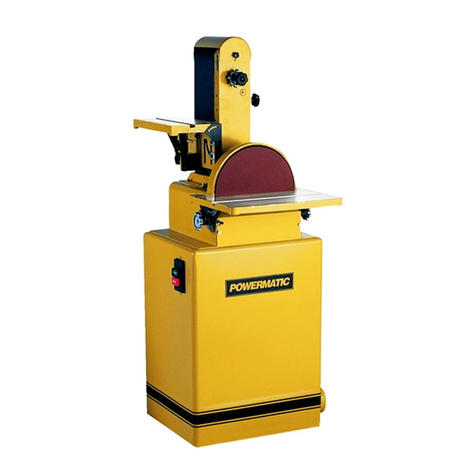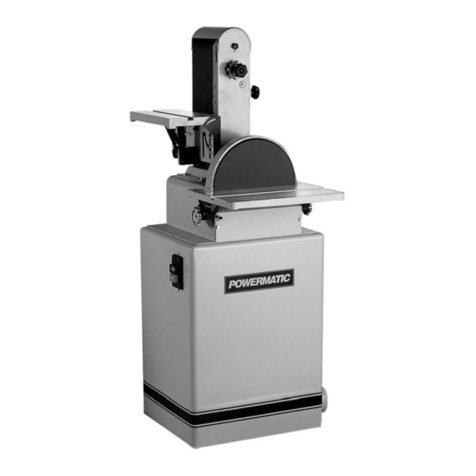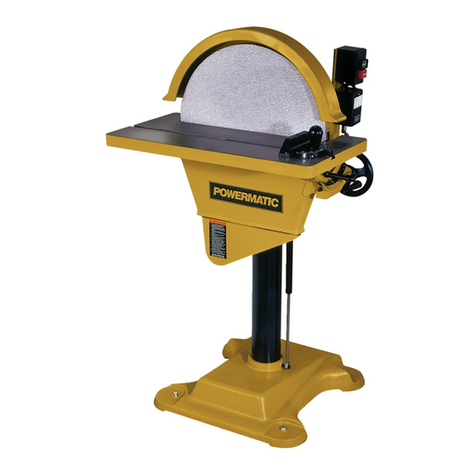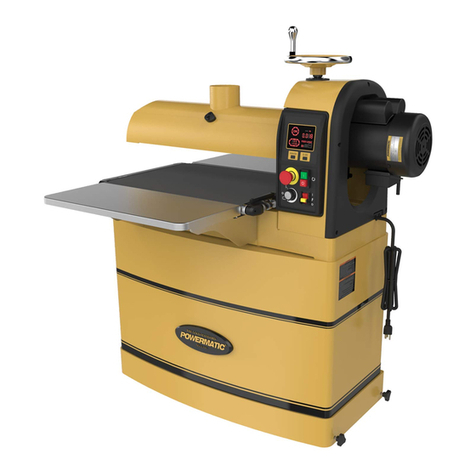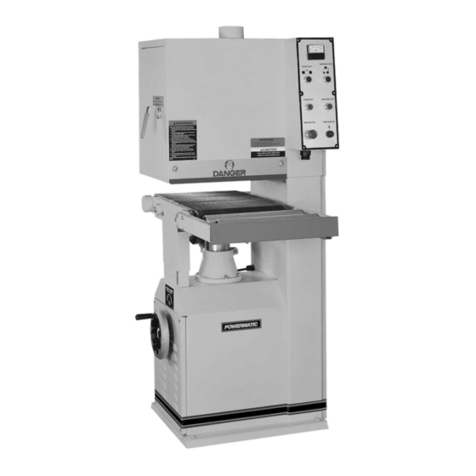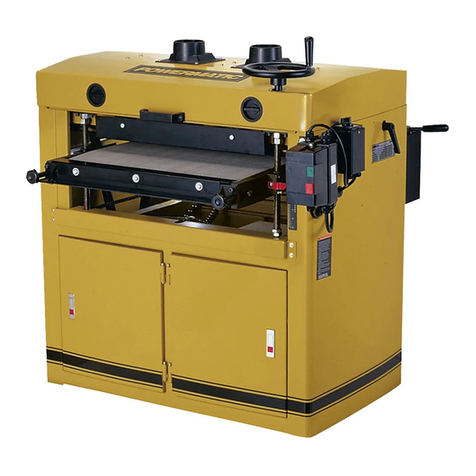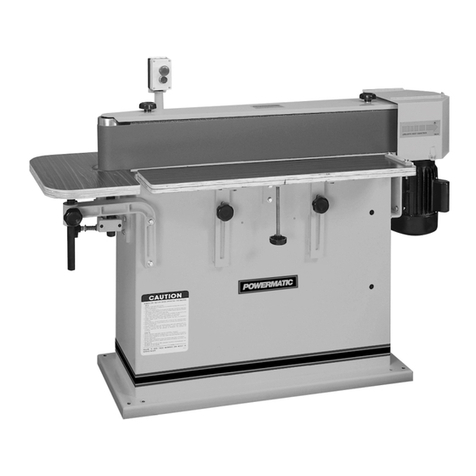
3
GB - ENGLISH
Operating Instructions
Dear Customer,
Many thanks for the confidence you have shown in us with the purchase of your new POWERMATIC-machine. This
manual has been prepared for the owner and operators of a POWERMATIC PM2244 drum sander to promote safety
during installation, operation and maintenance procedures. Please read and understand the information contained in
these operating instructions and the accompanying documents. To obtain maximum life and efficiency from your
machine, and to use the machine safely, read this manual thoroughly and follow instructions carefully.
Table of contents
Section Page
1. Declaration of conformity ..........................................................................................................................................4
2. Warranty ....................................................................................................................................................................4
3. Safety.........................................................................................................................................................................4
3.1 Authorized use .....................................................................................................................................................4
3.2 General safety notes ............................................................................................................................................4
3.3 Remaining hazards ...............................................................................................................................................5
3.4 Lables and positions.............................................................................................................................................5
4.0 Specifications...........................................................................................................................................................6
5.0 Setup and assembly.................................................................................................................................................7
5.1 Shipping contents................................................................................................................................................7
5.2 Tools required for assembly................................................................................................................................7
5.3 Unpacking and cleanup .......................................................................................................................................7
5.4 Handwheel ..........................................................................................................................................................8
5.5 Infeed and Outfeed Tables..................................................................................................................................8
5.6 Caster lock knobs ................................................................................................................................................8
5.7 Dust Collection ....................................................................................................................................................8
5.8 Installing Abrasives..............................................................................................................................................8
6.0 Electrical connections..............................................................................................................................................9
6.1 GROUNDING INSTRUCTIONS...............................................................................................................................9
7.0 Adjustments ..........................................................................................................................................................10
7.1 Depth scale........................................................................................................................................................10
7.2 Conveyor belt tension/tracking.........................................................................................................................10
7.4 Inspecting drum alignment ...............................................................................................................................11
7.5 Tension roller adjustment .................................................................................................................................11
7.6 Storage cabinet .................................................................................................................................................12
8.0 Operations.............................................................................................................................................................12
8.1 Basic Operating Procedure................................................................................................................................12
8.2 Controls and LED display ...................................................................................................................................12
8.3 Drum motor operation......................................................................................................................................12
8.4 Feed Logic activation.........................................................................................................................................13
8.5 Conveyor motor operation................................................................................................................................13
8.6 Unit conversion .................................................................................................................................................13
8.7 Drum height setting ..........................................................................................................................................13
8.8 Emergency stop.................................................................................................................................................13
8.9 Switch safety key...............................................................................................................................................13
8.10 Setting depth of cut.........................................................................................................................................13
8.11 Establishing drum height.................................................................................................................................13
8.12 Selecting conveyor rate ..................................................................................................................................14
8.13 Maximum performance tips............................................................................................................................14
9.0 Maintenance .........................................................................................................................................................15
9.1 Cleaning and lubrication....................................................................................................................................15
9.2 Drum maintenance............................................................................................................................................15
9.3 Conveyor belt replacement...............................................................................................................................16
10.0 Abrasive dimensions .......................................................................................................................................16
11.0 Tracker kit............................................................................................................................................................17
12.0 Abrasives .............................................................................................................................................................18
13.0 Troubleshooting the PM2244 Drum Sander........................................................................................................19
